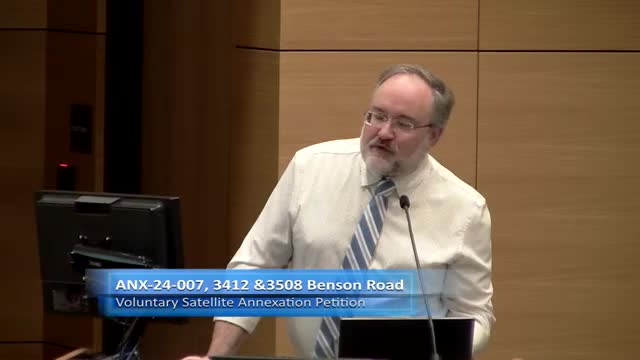Housing debate intensifies over affordability and community needs
October 08, 2024 | Garner, Wake County, North Carolina
This article was created by AI summarizing key points discussed. AI makes mistakes, so for full details and context, please refer to the video of the full meeting. Please report any errors so we can fix them. Report an error »

During a recent government meeting, officials discussed ongoing development projects and the pressing issue of affordable housing in Garner, North Carolina. The conversation highlighted the responsibilities of developers in improving infrastructure and the complexities surrounding the definition and implementation of affordable housing.
One key topic was the obligation of developers to fund necessary improvements, such as traffic signals and road modifications, as seen in previous projects like the Costco and Caddy Road development. Officials emphasized that these improvements must be completed before new developments are approved, ensuring that the burden does not fall on taxpayers.
The discussion then shifted to the challenges of defining \"affordable housing\" in the context of rapid growth and inflation in Wake County. Council members expressed concerns that current terminology does not accurately reflect the needs of the community. The North Carolina Housing Finance Agency's definitions of workforce housing, which historically targeted individuals earning 100% of the Area Median Income (AMI), were deemed outdated. Officials argued that many essential workers, such as teachers and healthcare professionals, cannot afford housing at this income level, leading to increased traffic and other community issues.
The meeting also addressed the need for a more nuanced approach to affordable housing. Council members noted that setting the income ceiling at 100% AMI could inadvertently exclude lower-income residents from accessing affordable units. They advocated for a reevaluation of income thresholds to better serve those earning below this level, ensuring that the housing developed meets the actual needs of the community.
Despite the challenges, officials acknowledged that Garner remains one of the most affordable municipalities in Wake County, with ongoing projects aimed at increasing housing availability. The establishment of an affordable housing task force was highlighted as a positive step toward creating guidelines and expectations for future developments.
Overall, the meeting underscored the importance of continued dialogue among stakeholders to address the evolving needs of the community while balancing development goals with the necessity for affordable housing solutions.
One key topic was the obligation of developers to fund necessary improvements, such as traffic signals and road modifications, as seen in previous projects like the Costco and Caddy Road development. Officials emphasized that these improvements must be completed before new developments are approved, ensuring that the burden does not fall on taxpayers.
The discussion then shifted to the challenges of defining \"affordable housing\" in the context of rapid growth and inflation in Wake County. Council members expressed concerns that current terminology does not accurately reflect the needs of the community. The North Carolina Housing Finance Agency's definitions of workforce housing, which historically targeted individuals earning 100% of the Area Median Income (AMI), were deemed outdated. Officials argued that many essential workers, such as teachers and healthcare professionals, cannot afford housing at this income level, leading to increased traffic and other community issues.
The meeting also addressed the need for a more nuanced approach to affordable housing. Council members noted that setting the income ceiling at 100% AMI could inadvertently exclude lower-income residents from accessing affordable units. They advocated for a reevaluation of income thresholds to better serve those earning below this level, ensuring that the housing developed meets the actual needs of the community.
Despite the challenges, officials acknowledged that Garner remains one of the most affordable municipalities in Wake County, with ongoing projects aimed at increasing housing availability. The establishment of an affordable housing task force was highlighted as a positive step toward creating guidelines and expectations for future developments.
Overall, the meeting underscored the importance of continued dialogue among stakeholders to address the evolving needs of the community while balancing development goals with the necessity for affordable housing solutions.
View full meeting
This article is based on a recent meeting—watch the full video and explore the complete transcript for deeper insights into the discussion.
View full meeting
